Alder, an elegant and useful tree in gardens, is a genus (Alnus) often too little known to amateur gardeners. Yet, beyond the glutinous alder of the countryside, there are very interesting species and cultivars. Propagation of alder is an activity accessible even to beginners. In this tutorial, we will guide you step by step to learn to propagate alder by propagation by cuttings, sowing or layering.
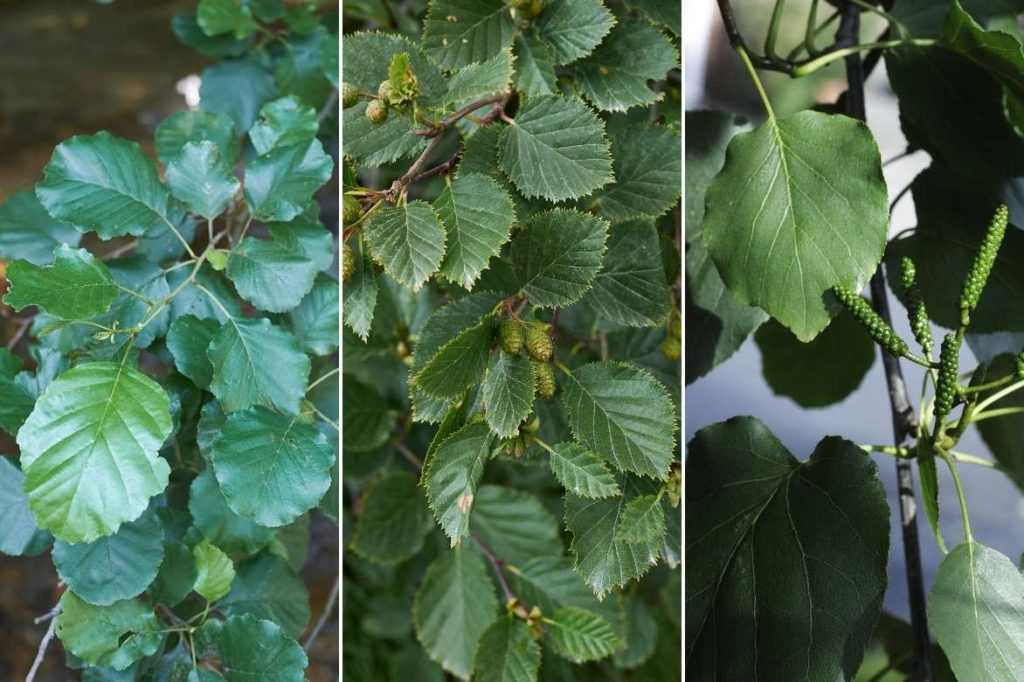
Alders: tree of a thousand virtues
Alder (genus Alnus) belongs to family Betulaceae and is notable for ability to grow in wet soils, often near watercourses. There are several species, including the glutinous alder (Alnus glutinosa) and the white alder (Alnus incana).
Why growing alders?
Alder plays an important ecological role. In addition to stabilising soils thanks to deep roots, it fixes atmospheric nitrogen thanks to a sym symbiosis with bacteria, thus enriching surrounding soil. It is also an excellent choice to attract birds and other wildlife to your garden.
To learn more about these trees, read Alder: planting and growing.
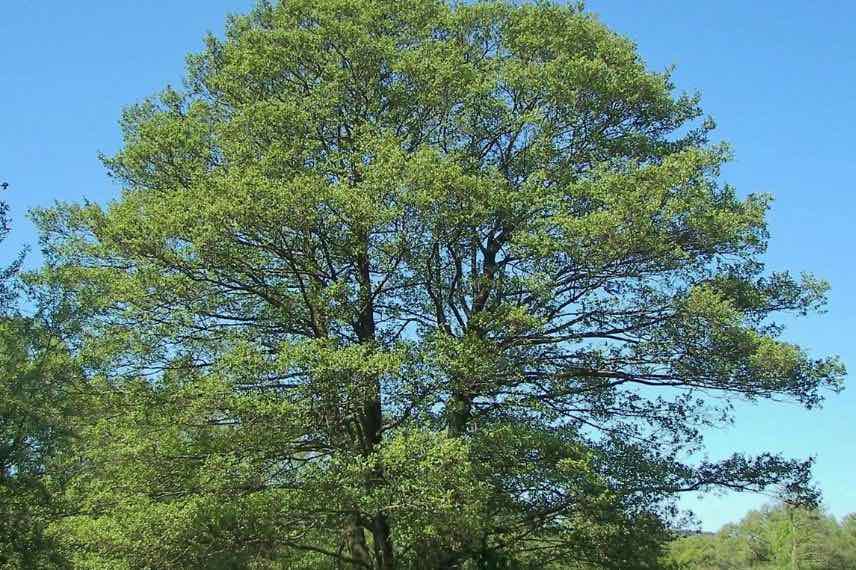
Why propagating alder?
Propagating an alder offers several advantages:
- Create hedges or natural windbreaks: alders grow quickly, making them an excellent choice for establishing a vegetative screen.
- Restore wetlands: if you have a marshy area or waterlogged soil, alder is a valuable ally.
- Enrich soil: by planting several alders, you help improve soil quality thanks to their nitrogen-fixing properties.
- Economical and sustainable: propagating your own trees is a cost-effective alternative to buying young plants from nursery.
When to propagate alder?
The ideal time to propagate alder depends on method chosen:
- Propagation by cuttings: carry out this method at end of autumn or start of winter, when tree is dormant.
- Sowing: do sowing in spring, after a period of cold stratification of seeds during winter.
- Layering: this method can be done in spring or early autumn.
Materials needed
For propagation by cuttings :
- Clean, sharp pruning shears
- Rooting activator (facultative, but recommended)
- A light substrate (mix of sand and potting soil)
- Pots or a mini greenhouse
For sowing :
- Alder seeds harvested in autumn
- A seed tray or pots
- Seed compost
- A refrigerator for stratification
For layering :
- A knife or cutter
- Garden staples or stones to hold the stem to ground
- A mix of soil and compost
- A watering can
How to propagate alder?
Propagation by cuttings
This is simplest and quickest method to propagate alder. Here are steps:
- Choose a healthy branch, one year old, about 20 to 30 cm long.
- Cut the cutting on the slant with a clean pruning shear.
- Remove leaves from lower two-thirds of the branch.
- Dip base of cutting in a plant hormone for propagation by cuttings (facultative).
- Plant cutting in a light, well-drained substrate and water lightly.
- Place pots in a bright spot, out of direct sun, and keep substrate moist.
Roots should appear in 6 to 8 weeks.
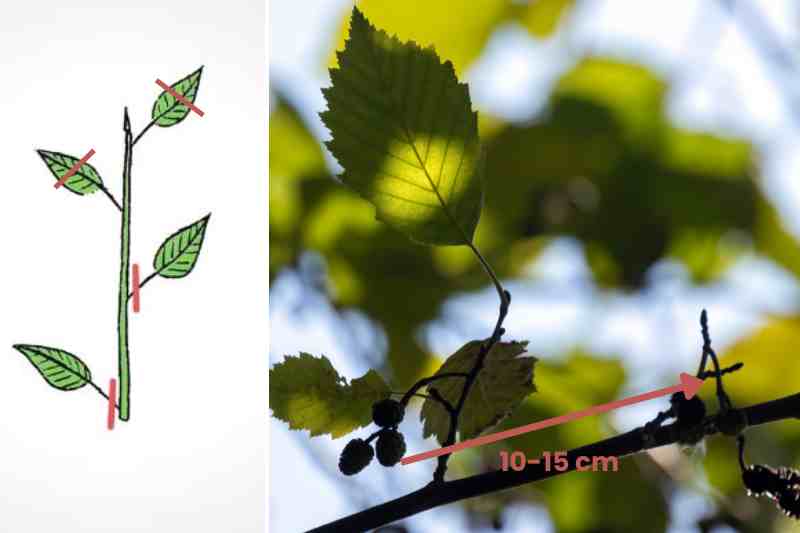
Sowing
Propagating alder by sowing requires a bit more patience:
- Harvest seeds in autumn, when cones open naturally.
- Place seeds in a plastic bag with a little damp sand, then leave them in refrigerator for 4 to 6 weeks (cold stratification).
- In spring, sow seeds in pots filled with light potting soil.
- Cover seeds lightly and water gently.
- Place pots in a bright spot, and keep substrate moist until germination (2 to 4 weeks).
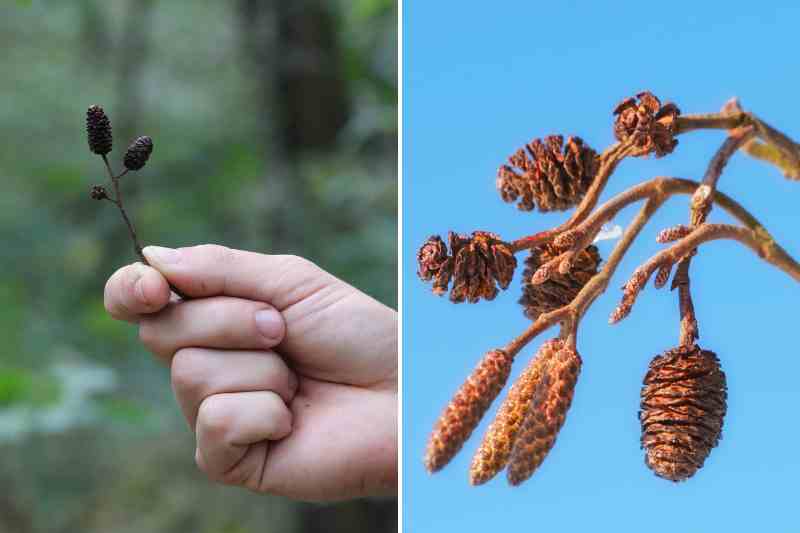
Layering
Layering is a natural and effective method, ideal for alders growing close to ground.
- Choose a low, flexible shoot.
- Slightly incise the part of the shoot that will touch the ground.
- Bury the incised part in a mix of soil and compost, and hold it with a staple or a stone.
- Water regularly.
After 6 to 12 months, new roots form. You can then cut the mother shoot and replant the new tree.
And grafting?
Grafting alders is rare and little practised, as these trees propagate more effectively by sowing, propagation by cuttings or layering. However, if one wishes to graft an alder to reproduce a specific variety, it is preferable to use a cleft graft in spring on a rootstock of same species to favour compatibility.
Care after propagation
Once propagation has succeeded, a few care measures are needed to ensure good growth of your young alder-plants:
- Watering : maintain constant moisture, especially during first months. Young plants must never lack water.
- Protection : protect cuttings or sowing from severe cold with a frost cloth or by bringing them under cover.
- Fertilisation : no need for nitrogen-rich fertilisers, as alder fixes this element naturally. A little compost in spring is sufficient.
- Monitoring : regularly inspect young trees to detect diseases or pests.































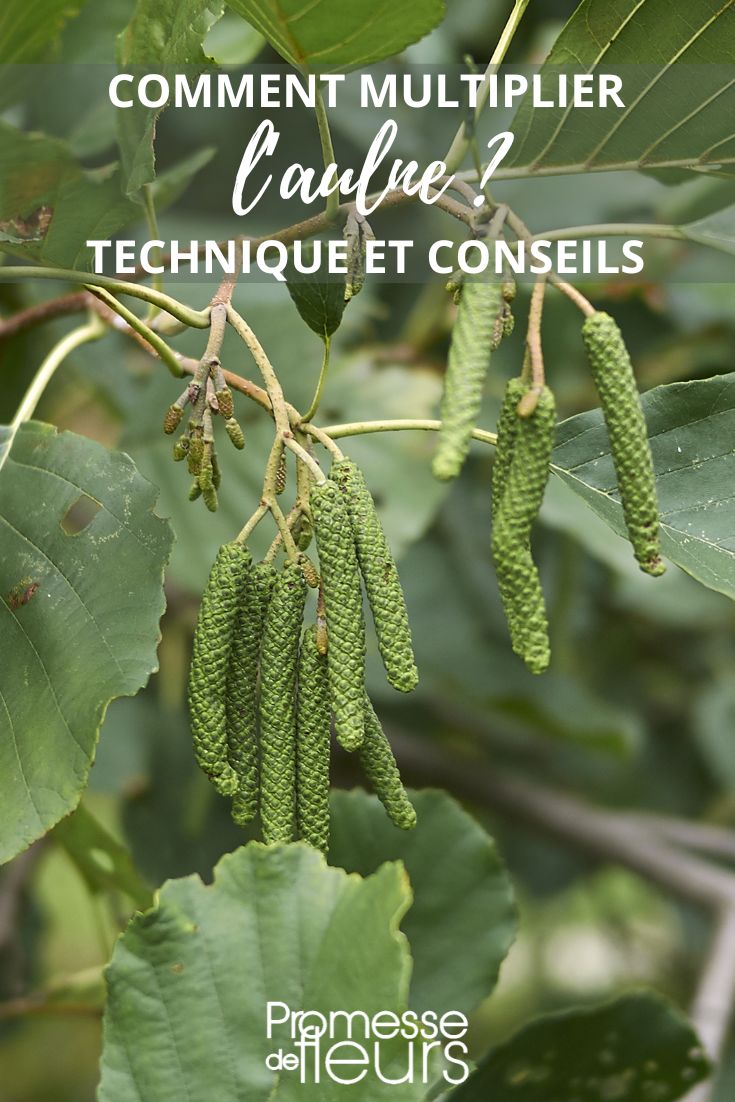
Comments